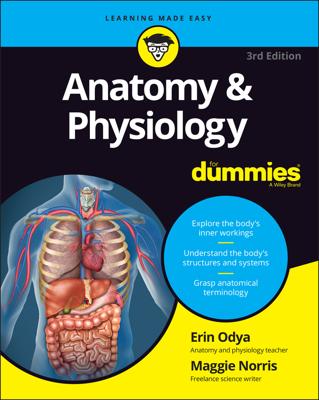Skin is jam-packed with components; it has been estimated that every square inch of skin contains 15 feet of blood vessels, 4 yards of nerves, 650 sweat glands, 100 oil glands, 1,500 sensory receptors, and more than 3 million cells with an average life span of 26 days that are constantly being replaced. At least four kinds of receptors are involved in creating the sensation of touch:
Free nerve endings: These are the most abundant type of sensory endings, occurring widely in the integument and within muscles, joints, viscera, and other structures. Afferent nerve endings are dendrites (branched extensions) of sensory neurons that act primarily as pain receptors, although some sense temperature, touch, and muscles (including the sensation of “stretch”).
Found all over the body, free nerve endings are especially prevalent in epithelial and connective tissue. These small-diameter fibers have a swelling at the end that responds to touch and sometimes heat, cold, or pain. Some of these endings are specialized disc-shaped structures called Merkel discs, present in small numbers at the dermal-epidermal junction, that function as light-touch receptors within the deep layers of the epidermis.
Meissner’s corpuscles: These light-touch mechanoreceptors lie within the dermal papillae. They’re small, egg-shaped capsules of connective tissue surrounding a spiraled end of a dendrite. Most abundant in sensitive skin areas such as the lips and fingertips, these corpuscles and free nerve endings can sense a quick touch but not a sustained one. That’s why your skin is able to ignore the touch sensation of your own clothing.
![[Credit: Illustration by Kathryn Born, MA]](https://www.dummies.com/wp-content/uploads/462753.image0.jpg) Credit: Illustration by Kathryn Born, MA
Credit: Illustration by Kathryn Born, MAPacinian corpuscles: These deep-pressure mechanoreceptors are dendrites surrounded by concentric layers of connective tissue. Found deep within the dermis and hypodermis, they respond to deep or firm pressure and vibrations. Each is more than 2 millimeters long and therefore visible to the naked eye.
Hair nerve endings: These mechanoreceptors respond to a change in position of a hair. They consist of bare dendrites. The sensory nerve enters the hair follicle, wrapping around the hair bulb. When the hair is moved, the hair stimulates the nerve endings, creating sensation.
There are two primary temperature receptors, one for heat and one for cold:
End-bulbs of Krause: Also known as Krause’s corpuscles, they contain sensory nerve endings, which may be mechanoreceptors that respond to continuous pressures. However, they are also thought to be thermoreceptors sensitive to cold and activated by temperatures below 68 degrees Fahrenheit (20 degrees Celsius).
They consist of a bulbous capsule surrounding the dendrite and are commonly found throughout the body in the dermis as well as in the lips, the tongue, and the conjunctiva of the eyes.
Brushes of Ruffini: Also known as Ruffini cylinders, Ruffini’s corpuscles, or bulbous corpuscles, these end organs branch out parallel to the skin and detect tension deep in the skin. Thus, they are sensitive to pressure, stretching, and distortion of the skin. Found primarily in the dermis and subcutaneous tissue, they’re dendrite endings enclosed in a flattened capsule.
The muscles have neuromuscular spindles (also called proprioceptors) that transmit information to the spinal cord and brain about the lengths and tensions of muscles. This information helps provide awareness of the body’s position and the relative position of body parts. The spindles also assist with muscle coordination and muscle action efficiency.

